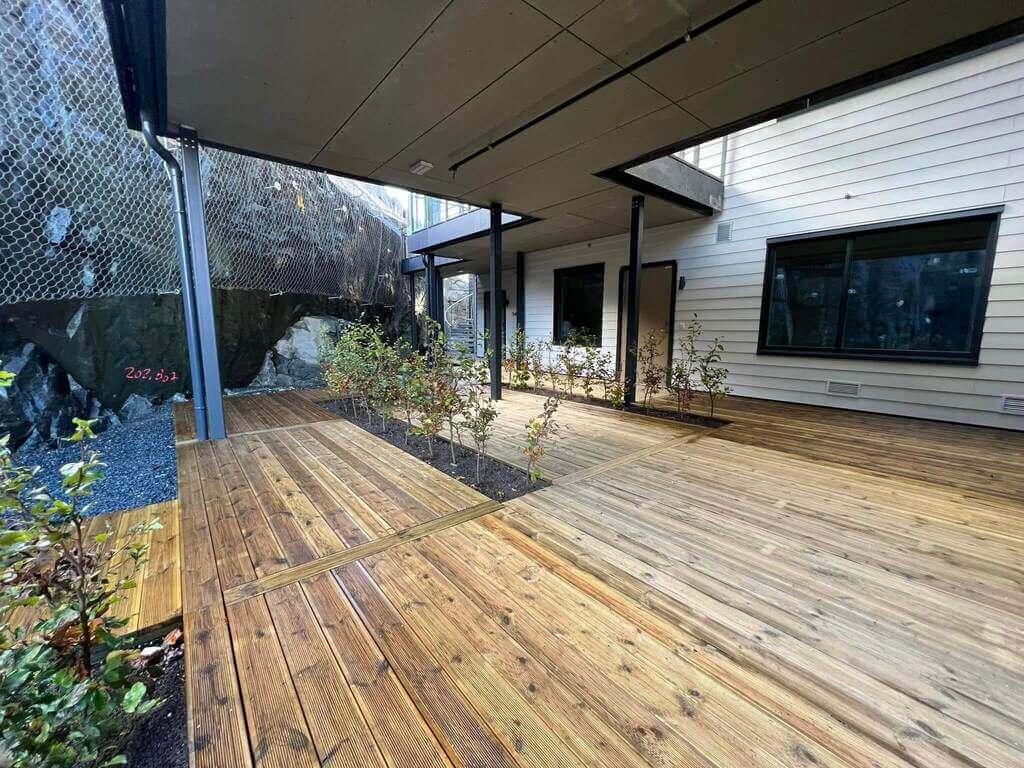Rising energy prices are one of the reasons why energy-efficient buildings are being promoted in construction. When can a building be considered energy-efficient? What materials are used to construct energy-efficient buildings? Find answers to frequently asked questions about buildings with minimal energy demand.
What Is an Energy-Efficient House?
An energy-efficient house is a residential building that has lower energy demand than a traditional building with the same purpose. Reducing energy demand is directly related to the choice of building materials and the use of innovative technologies. The optimal orientation of the building relative to the cardinal directions also plays a significant role, as it allows for the maximum use of solar energy.
Energy-Efficient Building – Parameters and Requirements
Although all energy-efficient houses share a reduced energy demand (making them part of sustainable construction), different technologies achieve varying effects. Geography is also important—local climatic conditions must be considered. As a result, the definition of energy-efficient buildings may vary in terms of average annual energy consumption for heating per square meter of usable area.
Energy Efficiency Regulations in Poland
In Poland, energy efficiency regulations were updated just a few years ago. The current requirements are specified in the Regulation of the Minister of Infrastructure on Technical Conditions for buildings and their location. According to these regulations, the maximum demand for non-renewable energy is:
It is important to note that these are maximum values. In practice, lower parameters are often applied, e.g., 40 or 45 kWh/m² per year. If a building’s energy demand is even lower (around 15 kWh/m² per year), it is classified as a passive house.
What Materials Are Used to Build Energy-Efficient Buildings?
Energy-efficient construction is often referred to as eco-friendly construction, mainly due to the choice of materials used on-site. To minimize energy demand, wood is frequently used. It is a renewable material that works well as a structural component. Wooden-frame walls can be filled with mineral wool, providing excellent thermal and acoustic insulation.
Besides these benefits, wood also stores CO₂, making it even more environmentally friendly. Energy-efficient wooden buildings can be constructed using timber frame technology, which allows for much faster construction compared to traditional methods. One advantage is that work can be carried out year-round, not just in summer.

Modular Wooden Construction – A Perfect Fit for Energy Efficiency
Modular wooden construction perfectly aligns with the principles of energy efficiency. Prefabricated elements minimize material waste and shorten construction time, reducing overall energy consumption during the investment process. Wood, as the main structural material, has excellent thermal insulation properties, helping to reduce heat loss and improve energy efficiency. Modular wooden structures also allow easy integration with modern heating and ventilation systems, further lowering energy demand and enhancing user comfort.
Advantages of Energy-Efficient Buildings
The primary advantage of energy-efficient houses and modular multi-family buildings is long-term savings. Although constructing an energy-efficient building requires innovative technologies, maintenance costs are lower, reducing heating and cooling bills. As a result, investments in energy-efficient homes pay off within a few years.
Other Benefits of Energy-Efficient Buildings:
-
Thermal Comfort – This results from solar energy utilization and eliminating heat loss, ensuring a stable indoor temperature for optimal living conditions. Better insulation also reduces humidity risks.
-
Healthy Indoor Climate – Mechanical ventilation systems installed in energy-efficient buildings ensure a constant supply of fresh air, improving both comfort and well-being.
-
Minimal Environmental Impact – Lower energy demand translates directly into lower CO₂ emissions. If energy comes from renewable sources instead of fossil fuels, CO₂ emissions can be reduced to zero.
The numerous benefits of energy-efficient buildings go beyond financial savings—they also improve comfort and quality of life. With increasingly strict energy regulations for new buildings, energy efficiency is no longer just an option—it is a necessity.







